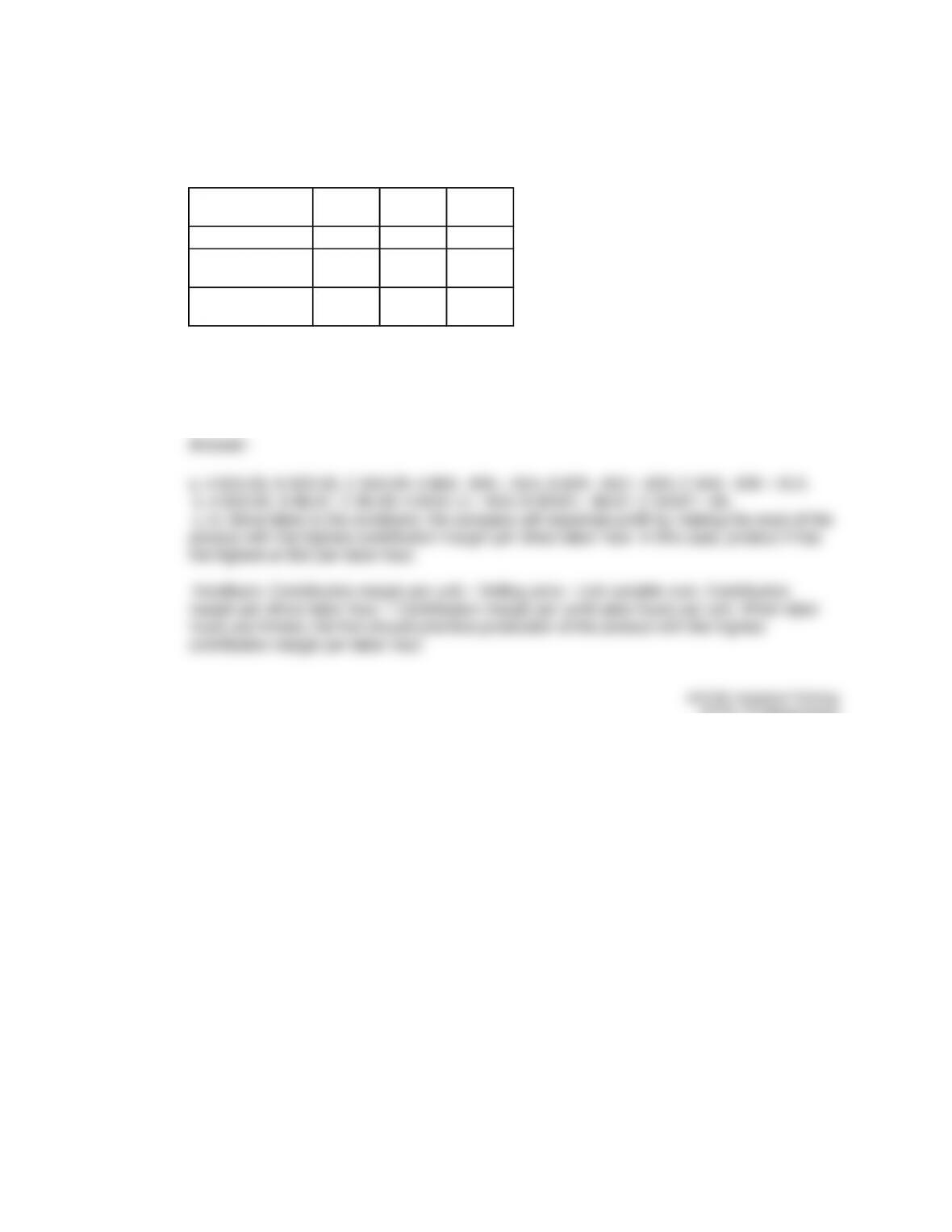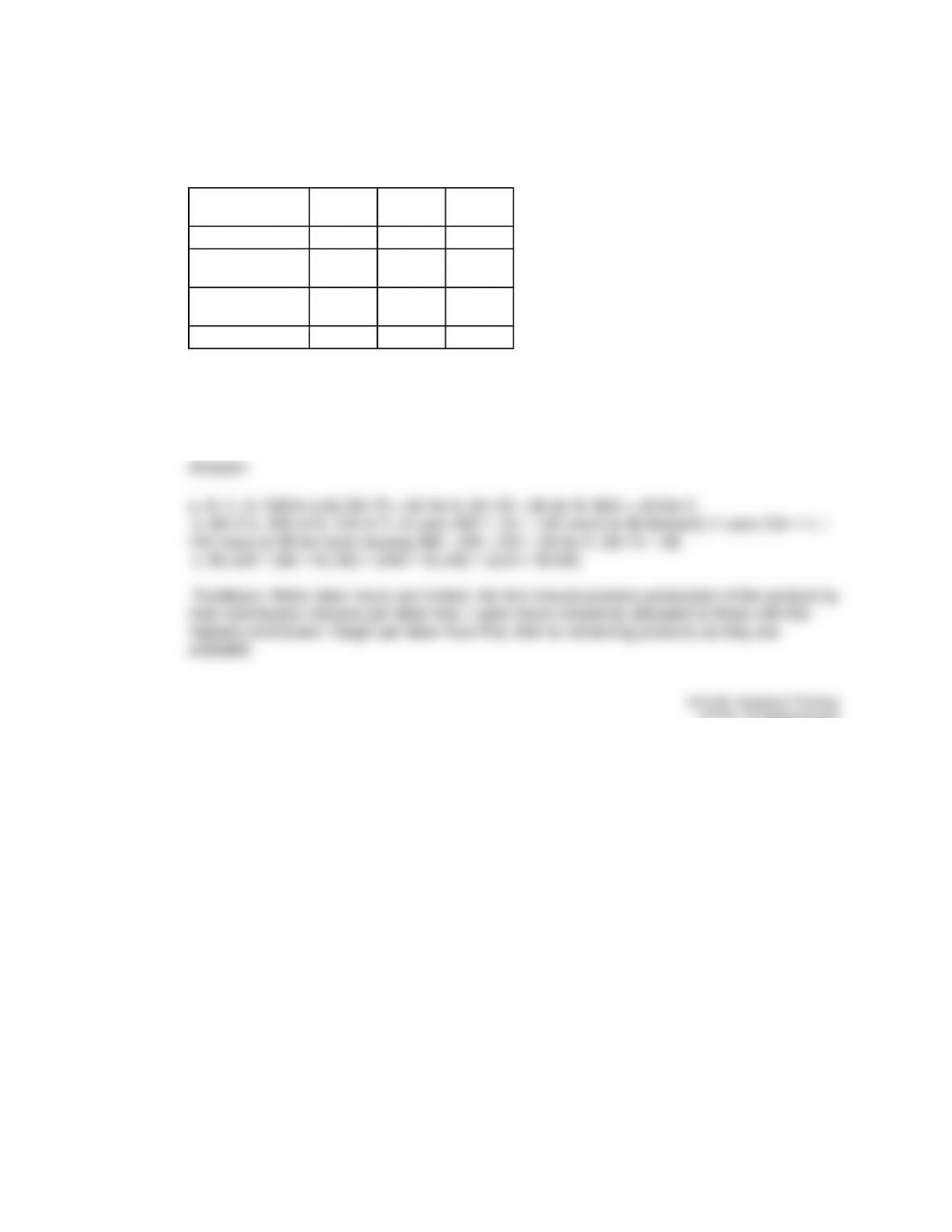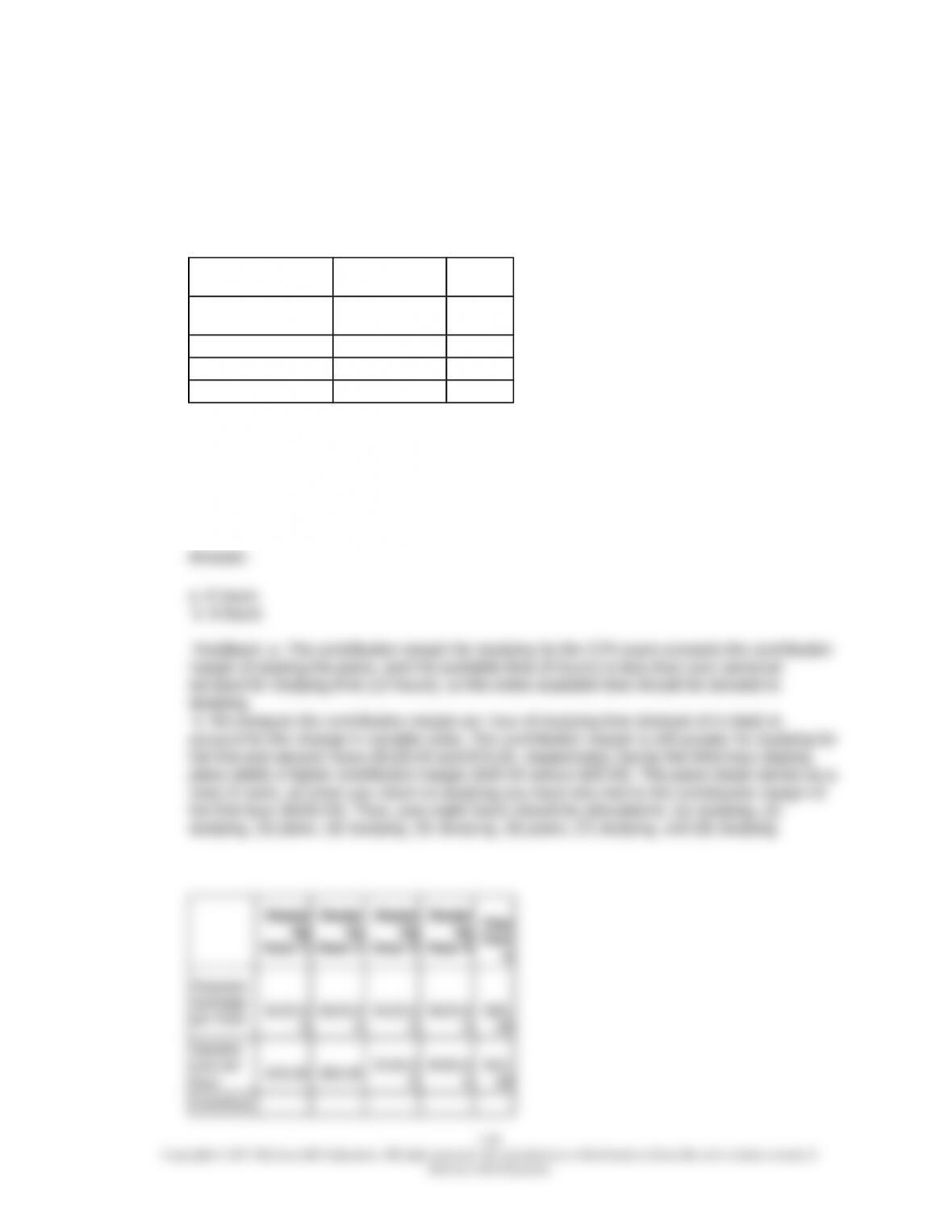Topic: Keep-or-drop decisions
76. The accounting firm of Pie and Lowell is examining its client base to determine how profitable
its regular clients are. Its analysis indicates that Chico, Inc. paid $116,000 in fees last year, but
cost the firm $124,000 ($106,000 in billable labor, supplies, and copying, and $18,000 in
allocated common fixed costs). If Pie and Lowell dropped Chico, Inc. as a client, and all fixed
costs are unavoidable, how would profit be affected?
B. Increase $8,000
AICPA: FN Measurement
Accessibility: Keyboard Navigation
Blooms: Apply
Difficulty: 2 Medium
Learning Objective: 07-05 Analyze a keep-or-drop decision.
Topic: Keep-or-drop decisions
77. Davenport Inc. has two divisions, Howard and Jones. Following is the income statement for
the past month:
Howard Jones Total
Sales $800,000 $600,000 $1,400,000
Variable Costs 600,000 580,000 $1,180,000
Contribution
Margin $200,000 $20,000 $220,000
Fixed Costs
(allocated) 150,000 150,000 300,000
Profit Margin $50,000 ($130,000) ($80,000)
What would Davenport's profit margin be if the Jones division was dropped?
AICPA: FN Measurement
Accessibility: Keyboard Navigation
Blooms: Apply
Difficulty: 2 Medium
7-47
Copyright © 2017 McGraw-Hill Education. All rights reserved. No reproduction or distribution without the prior written consent of
McGraw-Hill Education.





























































































































































































